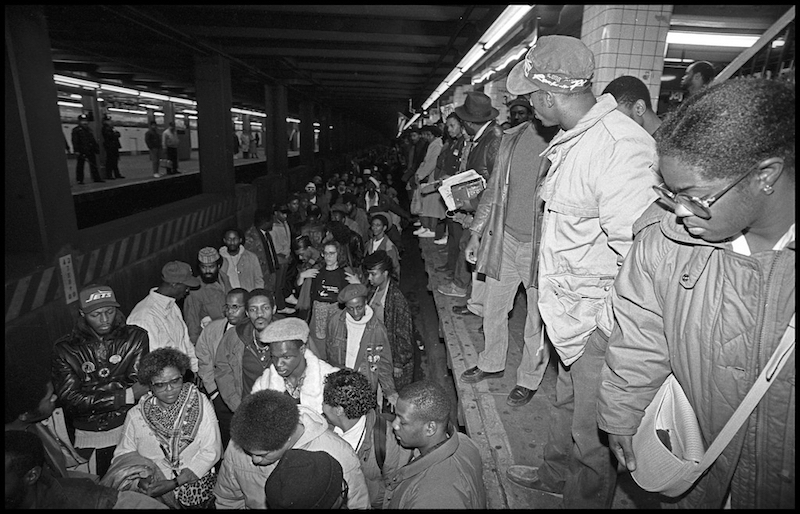
As mass protests against the new President sweep the nation, a new photo exhibit is underway at the Bronx Documentary Center to remind New Yorkers that political dissent is in the city’s DNA.
“‘Whose Streets? Our Streets!’ New York City: 1980-2000,” which opened on Jan. 14, features the work of 37 photojournalists who documented rallies in the city during the 1980s and ’90s to draw attention to some hot button issues of that era, including racism, police brutality, the AIDS epidemic and reproductive and gay rights.
One woman who planned to travel to Washington D.C. for the post-inauguration women’s march came to the opening reception to gather ideas for photographing that event. Rebecca Alperstein, 35, said that seeing documentation of social unrest inspired her.
“When I heard about this exhibit, I thought it was a good thing to see right before I got down there,” said Alperstein.
The exhibit’s curator, Meg Handler, said the organizers began considering the idea for “Whose Streets? Our Streets!” a year and a half ago—-long before the 2016 presidential election and the outpouring of anger that has followed. Although the issues that led to the unrest are all very different, she added, the theme of public defiance unifies them.
“You may have a show about AIDS, housing, education and labor,” said Handler, an editor-at-large for Reading the Pictures. But at the same time, “A group of independent photographers working as freelancers, making their own decisions about what and how to shoot is very unique.”
The photographs on display show how naturally protests have blended into the city’s daily life over the decades. In a 1984 photo by Joseph Rodriguez, children take part in a rally in East Harlem. Another, taken by Linda Rosier in 1992, shows protesters rallying for gay rights just outside Madison Square Garden as the Democratic National Convention is being held. In one striking 1985 photo of a protest against racism and sexism in the art world, women wearing gorilla masks hang posters to publicize their cause.
The 1980s and ‘90s were an especially fertile time for street protests as communities organized against the government’s unwillingness to help serve its less affluent citizens, said the Bronx Documentary Center’s executive director Michael Kamber.
“We didn’t know Donald Trump was going to be elected,” when the show was being organized, said Kamber. “This is the same thing happening again. People need to react, need to protest, make noise and push back.”
The organizers hope that the show will not only call attention to a period of foment on the city’s streets, but will also encourage others to go out and photograph the events that unfold to keep the new administration from getting too comfortable.
“What we hope is that the exhibition inspires people to go and photograph the resistance against Donald Trump,” said Handler. “Just like we had pictures of anti-Vietnam protests and we were inspired by the work photographers did before us. We hope to inspire young photographers to do the same: to get out to the streets, take pictures and contribute in whatever way you want to contribute.”
“Whose Streets? Our Streets!” will run until March 5. The gallery is open Wednesdays through Fridays from 3 to 7 p.m., and Saturdays and Sundays from 1 to 5 p.m., and is located at 614 Courtlandt Ave. in Melrose, three blocks from the 149th St./Third Ave. stop on the 2/5 train.
The story was updated on Jan. 26 to add a correction. Meg Handler is an editor-at-large at Reading the Pictures, not at BagNews.

